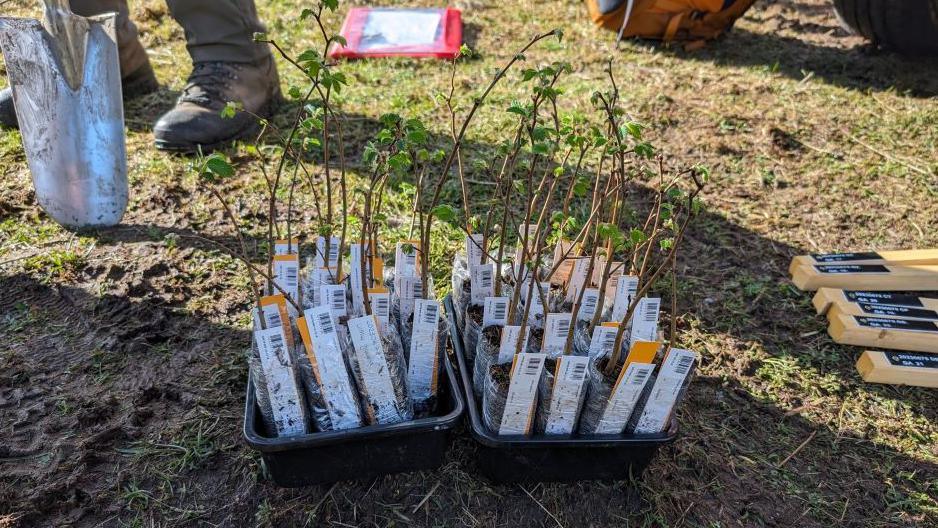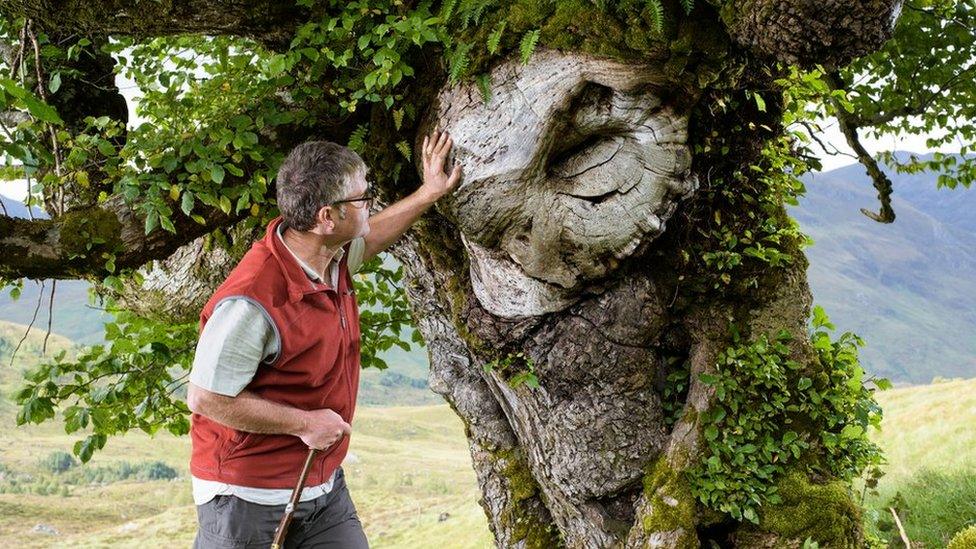Ancient lone elm the Last Ent is 'guardian' to new trees

- Published
An ancient lone wych elm whose remote Highland location has protected it from Dutch elm disease has been joined by dozens of seedlings for the first time in hundreds of years.
The elm - dubbed the Last Ent of Glen Affric - was Scotland's Tree of the Year in 2019.
Ents are mythological tree creatures from fantasy writer JRR Tolkein's Lord of the Rings, and serve as forest guardians.
The 35 seedlings were grown at Royal Botanic Garden Edinburgh and are the "offspring" of wych elms that have survived exposure to the disease for decades in the Scottish Borders.

Conservationists say their seedlings are resistant to the Dutch elm disease
In total, 200 seedlings are to be grown for replanting at Scottish sites.
The project is part of a joint effort between the gardens and the University of the Highlands and Islands along with landowners such as Forestry and Land Scotland (FLS) to save wych elm from vanishing from Scotland.
FLS forester Sam Brown said: “Having lived hidden away, many miles from the closest tree of the same species, the old elm of Glen Affric has escaped the ravages of Dutch Elm disease.
"It is fitting this site has been chosen as part of efforts to save the wych elm."

The Last Ent of Glen Affric is believed to be hundreds of years old
Dr Max Coleman, of the Royal Botanic Garden Edinburgh, said: "Using surviving, large wych elms in the Scottish Borders, exposed to Dutch elm disease for around 40 years, we have bred a new generation of seedlings that we hope have inherited resilience to disease from both parents.
"The offspring of these rare, promising trees are being planted in carefully selected sites that meet their needs and offer potential for natural spread.
"This work is assisting the formation of new populations of wild elms that have the genes and the genetic diversity that we hope will enable survival and adaptation in a changing environment."

The wych elm is in a remote location in a Highland glen
Dutch elm disease is a fungal infection spread by tiny bark beetles. It can rapidly wither and kill healthy trees.
The disease arrived in the south of England in the 1960s and since then it has spread across much of the British mainland, massively reducing the elm population.
In recent years it has been moving west through Aberdeenshire and Moray and into the Highlands, but it was hoped that the lower density of elm trees, cooler climate and prevailing winds would slow down its progress.
In 2018, warm weather was blamed for speeding up the spread of Dutch Elm Disease in the Inner Moray Firth area of the Highlands.
Last year, a tree believed to be Europe's oldest wych elm fell down after succumbing to the disease.
The Beauly Elm - which was believed to be almost 800 years old - had stood at the entrance to Beauly's ruined priory.
References to the tree have been found in records going back to medieval times.
Related topics
- Published5 January 2023

- Published23 October 2019
